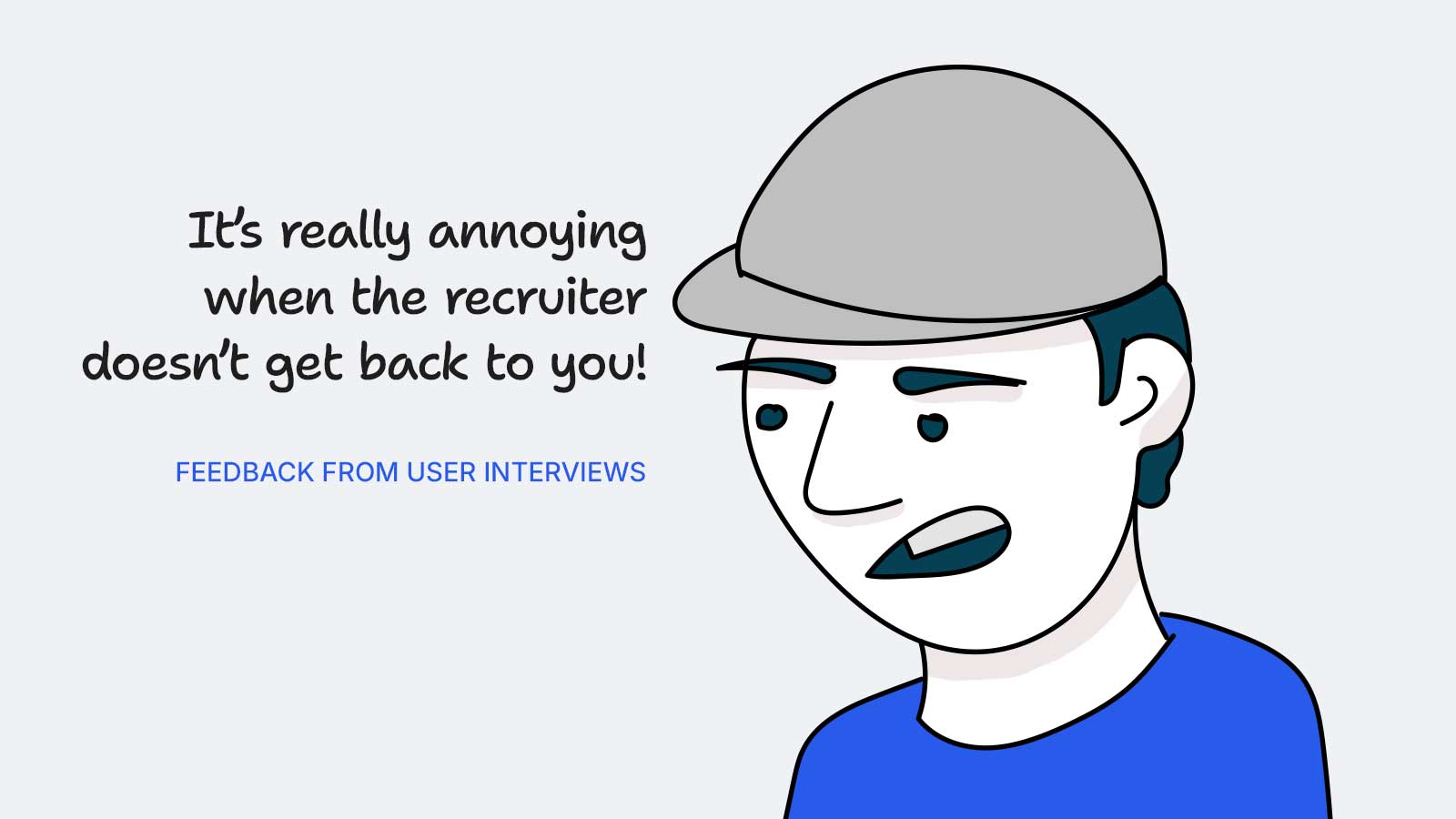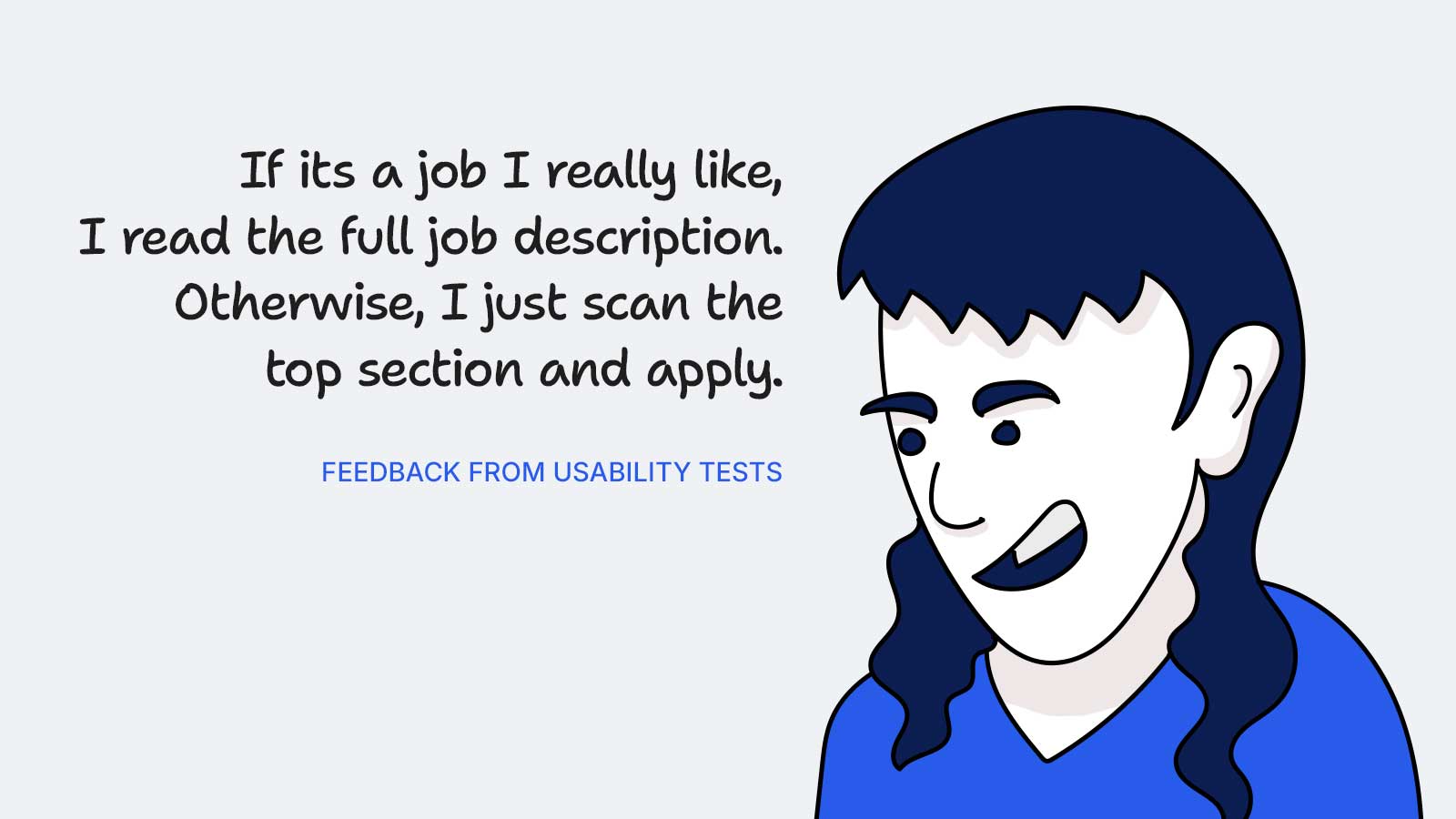The Job description page (JDP) has among the highest traffic on the job search platform HeyJobs. We wanted to improve the conversion rate of applications from the JDP, and optimise the usability of this page.
What did I do?
✅ Led the end-to-end design (discovery, user tests, final designs and everything in between).
✅ Competitive and best practices analysis.
✅ Experiment planning with the PM.
• The stakeholders: Employer Product team, InM team (Inventory & Matching team).
• The JDP has many different sections. We prioritised it's position using a survey we sent to the users.
• The release was planned as 11 experiments for the different JDP sections.
• Changes to the JDP also affected the job card designs.
The first fold
The first fold was cluttered with too much info which was not that important.
Company info
Information about the company was missing, which led users to google the company and hence leave the JDP.
Time of publishing
"Recently posted" was not good enough for the users. They wanted more granular info.
CTAs
The CTAs, such as "Save job" and "Similar jobs" were not at their optimal positions, and hence were seldom used.

We conducted remote usability tests with 7 participants.
👎 Company benefits were not considered important
👎 AI generated job summary was seen as confusing
👍 It helps to see if the job matches the user's skillsets (that they fill up in their profile)
👍 Company ratings (such as Kununu ratings) were received well
👍 "Recruiter response time" was very helpful, since many recruiters take very long to respond, or never get back

The results are from A/B tests that were conducted only for the first fold of the JDP.
2.1%
increase in clicks on 'Apply now' button, indicating improved user engagement
2.4%
increase in applications submitted, reflecting a more streamlined and effective user journey
0.74%
reduction in bounce rate on the JDP, signaling stronger user interest and engagement with the content
105%
increase in the number of jobs being saved, with no difference in the application submissions